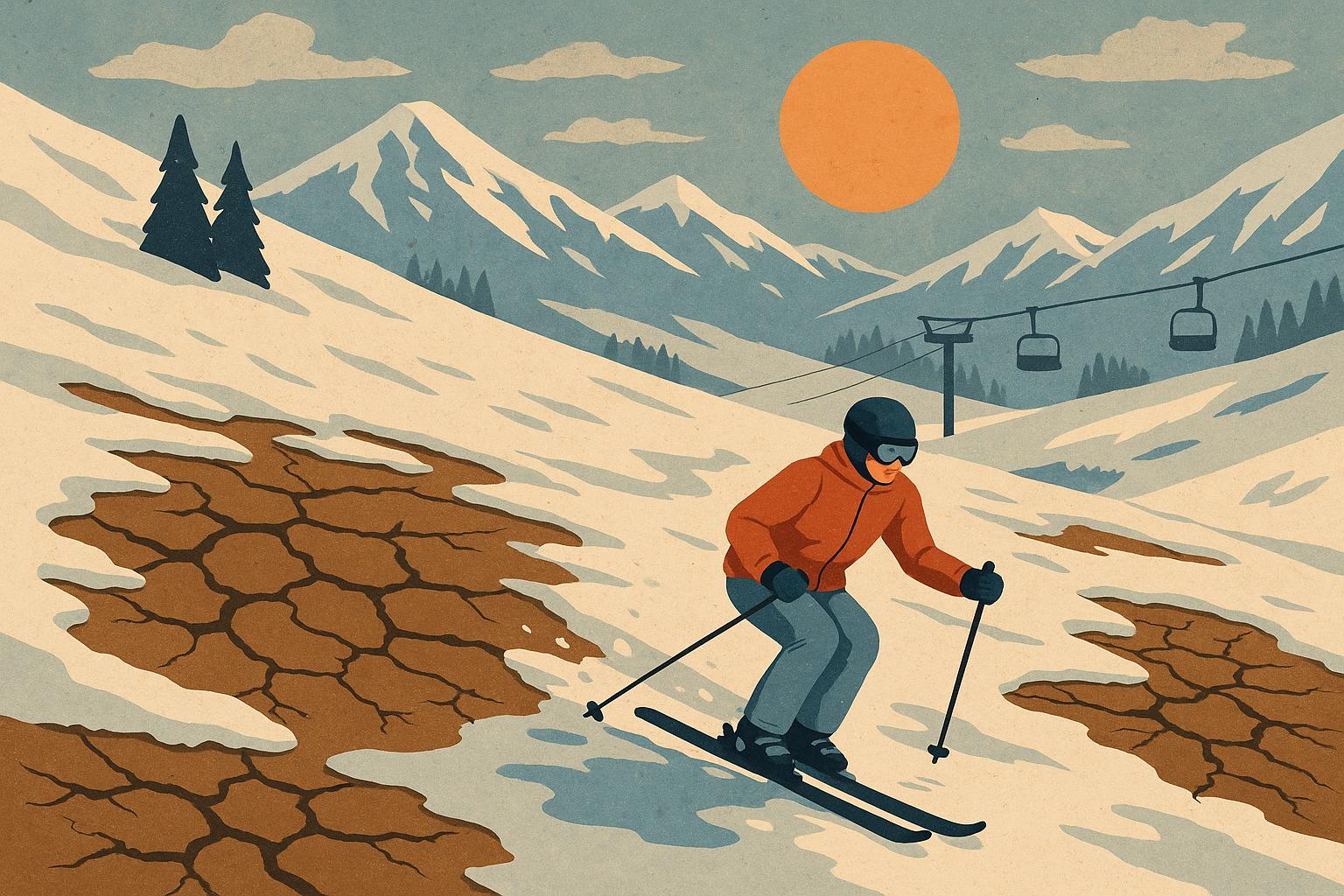The Impact of Climate Change on Winter Sports
Climate change has become an increasingly significant factor affecting various aspects of life globally, with winter sports being notably impacted. This shift is primarily due to rising temperatures and unpredictable weather patterns, which are affecting snow conditions crucial for activities such as skiing, snowboarding, and ice hockey.
Temperature Rise and Snow Conditions
The increase in global temperatures is one of the most apparent outcomes of climate change. Higher temperatures result in less snowfall, leading to a decline in the quality and quantity of snow, which is essential for winter sports. Average temperatures have risen, reducing the length of the winter sports season. Many regions traditionally known for their winter sports are now experiencing shorter winters, with fewer days suitable for skiing or snowboarding.
The correlation between temperature rise and snow conditions is systematic and deeply intertwined. The intricate processes governing weather patterns are being altered, leading to unexpected shifts in precipitation. Areas that once enjoyed consistent and predictable snowfall are now facing irregular snowfalls, which can vary wildly from one season to the next. The alteration of these natural patterns is making it challenging for winter sports enthusiasts to plan their activities well in advance.
Moreover, the quality of snow is also being adversely affected. Warmer temperatures can lead to wetter, heavier snow, which is not ideal for many types of winter sports, such as skiing. For sports that rely on ice, such as ice hockey or ice skating, prolonged periods of above-freezing temperatures complicate the creation and maintenance of ice rinks, whether natural or artificial.
Economic Implications
The declining quality of snow not only affects the sports themselves but also the economic stability of regions dependent on winter tourism. Ski resorts, in particular, face challenges as they need to invest in alternative solutions, such as snowmaking technologies, to maintain their operations. The use of artificial snow, however, comes with additional environmental concerns and costs.
Winter sports contribute significantly to the economies of many regions. Besides the immediate impact on jobs related to skiing, snowboarding, or ice skating venues, there is a broader economic ecosystem that includes hotels, restaurants, transportation, and retail opportunities. As the winter sports season shortens, these sectors face a corresponding decrease in revenue. Traditional revenue models that relied heavily on consistent snow seasons are under threat, pushing businesses to innovate or face economic downturns.
The investment into snowmaking technologies has provided some respite but at a cost. Snowmaking is an energy-intensive process, requiring large amounts of water and power, often sourced from local resources. This could strain local water supplies and ecosystem balances, illustrating how solutions at times create new challenges. Furthermore, the operational costs associated with snowmaking can significantly eat into profit margins, leading to increased prices for consumers and potentially lowering the competitive edge of certain resorts.
Adaptation Strategies
Winter sports industries are adopting various strategies to mitigate the impact of climate change. These include diversifying activities offered at resorts to include non-snow-based attractions, investing in sustainable technologies, and collaborating with environmental organizations to reduce carbon footprints. Some regions are looking into year-round tourism options to decrease their dependency on winter sports.
Diversification is emerging as a viable strategy. Resorts are increasingly offering summer activities such as mountain biking, hiking, or zip-lining, which appeal to a broader audience beyond traditional winter sports enthusiasts. This shift requires significant investment but has the potential to stabilize income throughout the year.
Technological investments are also being pursued. Resorts are exploring sustainable technologies that minimize environmental impacts, such as energy-efficient snow machines or renewable energy sources to power their operations. Sustainability not only supports the environment but can also be leveraged as a marketing tool, appealing to increasingly environmentally conscious consumers.
Climate change presents a shared challenge, prompting collaboration between businesses, governments, and environmental organizations. This collaboration may take the form of carbon offset projects, shared research initiatives, or policy lobbying. By working together, stakeholders can share resources, knowledge, and strategies to devise comprehensive solutions.
Environmental Concerns and Future Outlook
As resorts turn to snowmaking and other technological solutions, there is a growing concern about the environmental impact of such practices. Snowmaking requires a significant amount of water and energy, potentially leading to further environmental degradation. Moreover, there is an ongoing dialogue about balancing economic interests with sustainable environmental practices.
The environmental cost of snowmaking cannot be underestimated. Continuous extraction of water from local reservoirs and the potential for ecosystem disruptions must be considered, especially when coupled with increased energy consumption. The exploration of eco-friendly alternatives or innovations to make the process less resource-intensive is crucial for future sustainability.
Regarding the future of winter sports amidst climate change, uncertainty reigns. Continued global efforts to combat climate change, such as adhering to international agreements and reducing carbon emissions, are essential. The winter sports industry stands at a crossroads, with the potential to either adapt and thrive or suffer significant setbacks. Investments into research and development, sustainable practices, and innovative business models will be fundamental to shaping this future and ensuring that winter sports continue to be a cherished and viable pursuit.
For those interested in further exploring the topic of climate change and its implications on winter sports, numerous resources are available that delve into scientific studies and potential solutions. Understanding these impacts is crucial for policymakers, businesses, and enthusiasts in making informed decisions that could promote sustainability in the winter sports industry.
